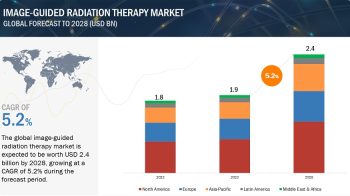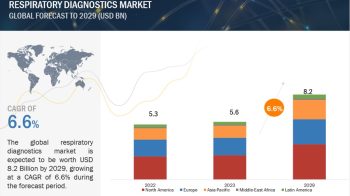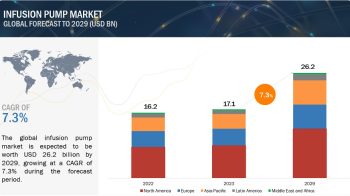
Growth in the particle therapy market is primarily driven by factors such as the various advantages offered by particle therapy over photon therapy, growing global prevalence of cancer, increasing adoption of particle therapy in clinical trials, and the increasing number of particle therapy centers worldwide.
[138 Pages Report] The global particle therapy market is projected to reach USD 1,349 million by 2023 from USD 865 million in 2018, at a CAGR of 9.3%. The study involved four major activities to estimate the current market size for particle therapy.
Exhaustive secondary research was done to collect information on the market and its different subsegments. The next step was to validate these findings, assumptions, and sizing with industry experts across the value chain through primary research. Both top-down and bottom-up approaches were employed to estimate the complete market size. Thereafter market breakdown and data triangulation was used to estimate the market size of segments and subsegments.
Download PDF Brochure: https://www.marketsandmarkets.com/pdfdownloadNew.asp?id=12809137
Synchrotrons are used to accelerate both protons and heavy ions such as carbon and hydrogen. The growth of the synchrotrons segment is attributed to factors such as the increasing number of research activities as well as the increasing investments in the development of synchrotron facilities
The large share of the proton therapy segment can be attributed to factors such as the high degree of precision, shorter treatment time, and reduced side-effects associated with proton therapy as compared to conventional photon therapies using X-rays. Other factors such as the increasing research activities in the field of radiation oncology using proton therapy systems, rising number of proton therapy centers, and longer equipment lifespan of proton therapy (30 years or more) in comparison to photon therapy (10 years) are expected to support the growth of this market in the coming years.
The introduction of small footprint single-room particle therapy centers is further promoting the adoption of proton therapy for the treatment of cancer in small-scale hospitals. Factors driving the growth of the treatment applications segment include the growing number of cancer patients globally, increasing government initiatives (aimed at equipping or upgrading hospitals with newer and advanced Radiotherapy systems), and the increasing availability of funding for the adoption of advanced cancer treatment technologies.
Request For Sample Pages: https://www.marketsandmarkets.com/requestsampleNew.asp?id=12809137
Asia Pacific is expected to hold a significant share in the particle therapy market during the forecast period
The Asia Pacific is one of the major revenue generating regions in the particle therapy market. China and Japan are the major countries responsible for the high growth of this regional market owing to factors such as the increasing per capita income, improving healthcare infrastructure, and supportive government activities in these emerging countries. Furthermore, the increasing geriatric population, growing incidence of cancer, and rising acceptance of particle therapy procedures and devices are also driving the growth of this regional market.
Leading market players and strategies adopted :
Ion Beam Applications SA (Belgium), Varian Medical Systems, Inc. (US), and Hitachi, Ltd. (Japan) are the major players operating in the particle therapy market. Other players in this market include Provision Healthcare (US), Mevion Medical Systems, Inc. (US), Sumitomo Heavy Industries, Ltd. (Japan), Optivus Proton Therapy, Inc. (US), ProTom International, Inc. (US), Advanced Oncotherapy Plc. (UK), and Danfysik A/S (Denmark).


